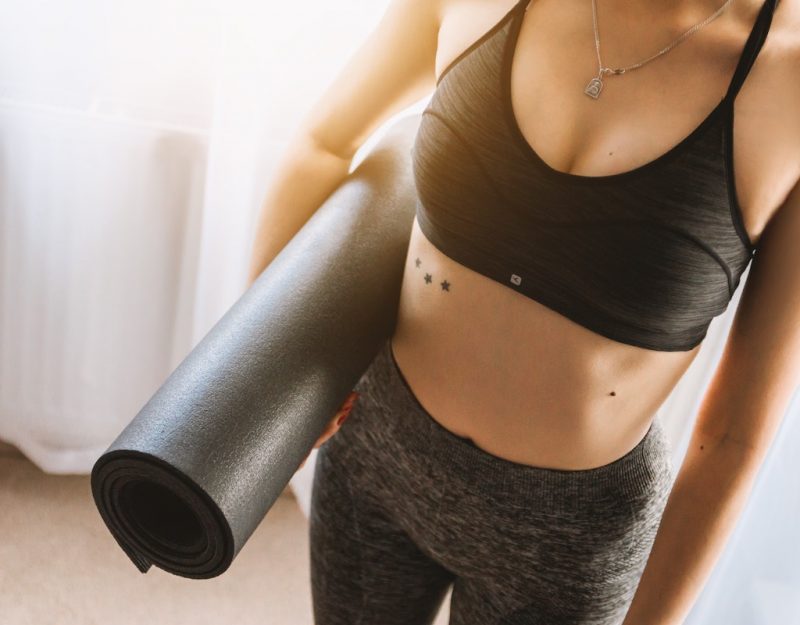While yoga has been around in some form for more than 5000 years, the past ten years have seen a massive growth in its popularity in New Zealand. In fact, Exercise New Zealand Chief Executive Richard Beddie, told RadioNZ that there had been a 500% growth in yoga-related studios and teachers across NZ since 2007.
If you don’t already practise yoga, you’ve probably been told to. Got back pain? Yoga. Stressed? Yoga. Relationship drama? Yoga.
Well, we’re not sure about that last one, but the benefits of yoga have been touted as endless. Here are a few of the benefits you might expect from a regular practise:
- Increased flexibility
- Improved muscle strength and tone
- More energy
- Weight loss
- Better focus
- Improved metabolism
- Stress management
But can something really be that good for you with no downside?
There are a couple of possible side-effects to yoga, mainly if you have pre-existing conditions. Head-down yoga positions, like those pictured below, can cause a rise in intraocular pressure for people with glaucoma as well as aggravate high blood pressure for those with pre-existing hypertension.

University of Sydney research published in the Journal of Bodywork and Movement Therapies, found that the incidence of pain caused by yoga is more than 10 per cent per year – 10 times higher than previously reported. However, 74 per cent of participants in the same study said that their pain was improved by yoga… so where does that leave us?
The thing about yoga is that it is just as much an exercise for your mind as it is for your body, and injury can be avoided by practising conscientiously. If you go into it with a competitive mind, trying to force positions that you’re not ready for, then you’re likely to end up hurting yourself.
Initially, the physical aspect of yoga was developed to prepare the body, and particularly the nervous system, for stillness/meditation. So the physical poses aren’t even the most important aspect of yoga – it is about connecting your mind, breath and physical body all together.
You will also need to be aware of the type of yoga you are practising. There are more than 100 different types, or schools, of yoga, so you will need to find the one that’s right for you.
Most sessions will include breathing exercises, meditation, and assuming postures (sometimes called asana or poses) that stretch and flex various muscle groups.
Here are some of the most popular types of yoga:
Hatha
These are slower moving classes, ideal for beginners, which require you to hold each pose for a few breaths.
Vinyasa
Vinyasa links movement and breath together in a dance-like way and the faster pace is good for intense exercisers.
Iyengar
These classes are all about alignment, with lots of detail and precision about the poses. It’s great if you’re detail-oriented or an anatomy lover, or even for injuries.
Ashtanga
This practise has a routine of six specifically sequenced yoga poses, great if you like a strict structure.
Bikram
Bikram follows a series of 26 poses and two breathing exercises practiced in a room heated to approximately 40 degrees and 40 percent humidity.
Hot Yoga
Hot yoga is similar to Bikram but teachers aren’t constrained by the 26-pose Bikram sequence. Great if you want a tough workout.
Kundalini
This spiritual practise consists of kriyas —repetitive physical exercises coupled with intense breath work — while also chanting, singing and meditating.
Yin Yoga
Yin yoga targets deeper connective tissues and the poses are held for several minutes at a time. It is not recommended for very flexible people or anyone who has a connective tissue disorder.
Restorative
The mellow, slow-moving restorative yoga practice is great for anyone who has a hard time slowing down. It gives your body a chance tap into your parasympathetic nervous system.
So if you haven’t already given it a shot, make sure you look into the type of yoga that sounds right for you, and go into it with an open mind to get the optimum benefits.
Sources in this article include PLOS, Science Daily and Daily Burn.






This was a very interesting read for me. Myself I’ve never done yoga in my life. And I like to see the downfalls with these things cos they only tell you the good things about it so this was a great read. Good to learn the good and the bad
I have never done yoga but there is a couple of people who do courses where I live I need to make time for myself and give it a go it sounds like it has great advantages
Yoga is good for me, but the really basic stretching etc as I have hip dysplasia and have to be careful, also don’t have as much flexibility due to this. I do find that it is great though as is nice and relaxing but I don’t get the time to do it as much as I would like, working fulltime and having a wee one 🙂
This was a really good breakdown of the different types of Yoga. I have done some Yoga in my time, but it was mostly the gentle mindful kind. It’s good to know that there are risks and to modify your positions to match
Really love the benefits of yoga – I have always found it really relaxing and good at clearing the mind – must do it more often! 🙂